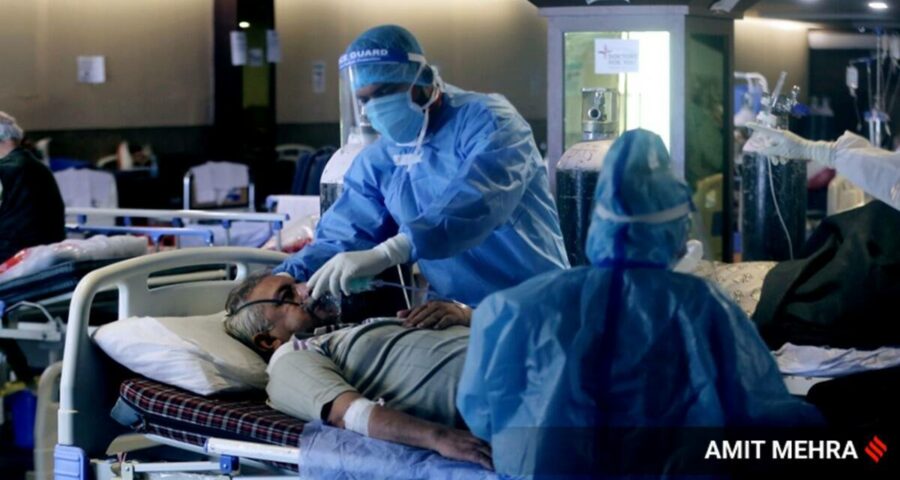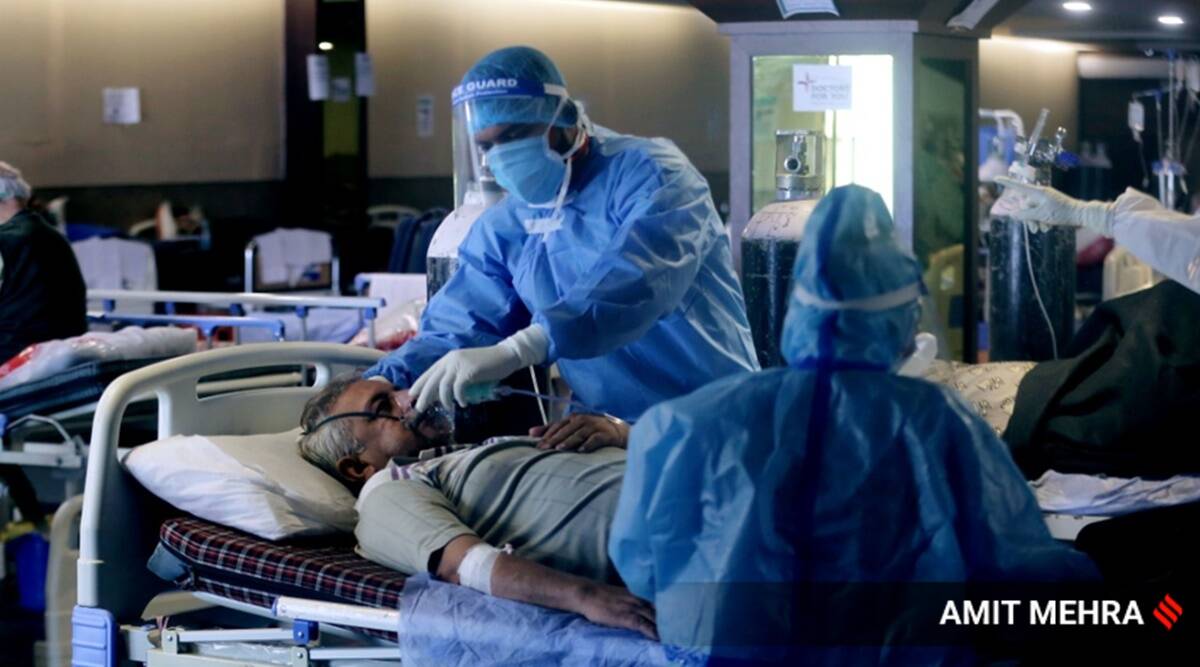Use of the existing government supply lines, for example, the 5,05,879 fair price shops (part of Public Distribution System), can be one solution. These are distributed through the length and breadth of the country. The use of LPG cylinder distributors can also be explored.
In his classic novel Slaughterhouse-Five, Kurt Vonnegut uses a phrase throughout the book — “So it goes”. The phrase conveys death. His use of the phrase in a novel about war is a figurative way of saying that though men, women and children were dying, no one cared for this loss of life and just moved on. The phrase has come to haunt me in recent times. In the last 15 days, there hasn’t been a day when I haven’t condoled a death or deaths due to Covid-19. With nearly four lakh cases and thousands of fatalities every day, the pandemic has engulfed India like an evil curse. Whatever healthcare system we had has been pulverised to dust by the sheer number of cases.
In Italy, at its peak in 2020, the Covid-19 virus had claimed around 1.21 lakh lives. In India, not only is this figure very high during the second wave but there is also a fundamental difference between their deaths and ours. In Italy, people died due to the Covid-19 illness and its complications. In the second wave in India, most of the deaths have come about due to a lack of basic healthcare facilities — medicinal oxygen being the most glaring. The situation is so bad that the highest court of the country has been deliberating on the matter for the past 10 days but, unfortunately, nothing seems to be happening. Frantic messages by hospitals alerting authorities of the lack of oxygen supply have become commonplace. Large cities like Delhi, Surat and Lucknow are gasping for air. There are reports of Covid patients dying in hospital wards, at home and even on the streets due to a lack of oxygen supply.
Such an unprecedented situation can be compared to a famine. Like a famine, where the basic problem is lack of food, the current pandemic seems to be evolving into an “oxygen famine”. Deaths in a famine are overcome by increasing food supplies. In the middle of a famine, it is futile to talk about the value of micronutrients or vitamins. The mere availability of food improves the situation. Akin to famine, the mortality in the current pandemic can be reduced by providing oxygen not only to the hospitals but also to patients, wherever needed, even at home.
Talk of setting up new hospitals with oxygen beds or improving the healthcare system during the current crisis may be pleasing to the ear but unfortunately, this discussion will not avoid more deaths at the moment. Home-based oxygen treatment protocols are already in place and most mild and some moderate disease patients can be treated at home provided oxygen is available. This may not be an ideal solution but a pragmatic approach to reduce the number of people dying. Cases waiting for admission into a hospital can also be salvaged if oxygen is available at home. This shall not only reduce the death rates, but will also reduce the admissions’ burden on an already crumbling healthcare system. How to get oxygen to the patient is something that needs careful understanding and some innovation.
Before the second wave landed in India, the requirement of medical oxygen was around 700-800 tonnes per day. This had increased to around 3,500-4,000 tonnes per day by the second week of April. This jump of more than 400 per cent has put immense pressure on the oxygen manufacturing units in the country. As the current wave of Covid-19 shows few signs of abating, the coming days will likely see more deaths in this oxygen famine.
In India, medicinal oxygen is produced by both government-owned and private manufacturers. Experts believe that India can produce about 7,000 metric tonnes of medical oxygen per day: We have enough capacity to produce medicinal oxygen but we still see hospitals and individuals struggling due to lack of oxygen. This is the classical trait of a famine as described by Amartya Sen — enough production but no availability. The key, therefore, lies in increasing the production of oxygen to maximum capacity. But manufacturing is not the same as supplying to regions hungry for oxygen. Medical oxygen is prepared in a liquid form with around 99.5 per cent purity. This is then stored in jumbo tankers and transported to distributors in cryogenic tankers at a specified temperature. Once this reaches the distributor, a process of regasification is done to convert it into gaseous oxygen, which is then filled into cylinders. This process is long, requiring three to six days to reach the user because India does not have enough cryogenic tankers to ensure a quicker supply of oxygen. This needs to be sorted out by the policymakers if any respite in the current situation is to be expected. Arranging cryogenic tankers is thus as vital as more hospital beds or ventilators.
The supply of oxygen cylinders to patients at home needs to be done on a war footing. Use of the existing government supply lines, for example, the 5,05,879 fair price shops (part of the Public Distribution System), can be one solution. These are distributed through the length and breadth of the country. The use of LPG cylinder distributors can also be explored. These existing supply lines can come in handy in identifying patients in remote areas as the fury of the pandemic in the hinterlands is not yet known.
The current wave of Covid-19 has opened the veins of the republic and is bleeding us white. If we want to intervene to stop deaths, the government needs to have a multi-pronged approach with science and rationality at the centre of it all. By treating this as an oxygen famine, a significant proportion of the mortality rates can be reduced. The current pandemic has reinforced something which we always knew: The healthcare infrastructure of a country is a reflection of the commitment of its regime to its people. We hope in these dystopian times, there is a lesson for each one of us to learn.
This column first appeared in the print edition on May 8, 2021 under the title ‘The oxygen famine’. The writer is head of the Department of Orthopaedics, AIIMS, New Delhi. Views are personal.
Source: Read Full Article


